Endless vineyards, hillside towns, pastel villages, and cities packed with history–these are the places and sites that make the South of France an unmissable destination. From Roman ruins to dramatic landscapes and quaint city squares, you’ll find a little of everything here. Between Provence, the French Riveria, and the southwestern part of the country, we’ve spent considerable time exploring the best places to visit in the South of France. Here’s a look at some of our favorites.
Aix-en-Provence
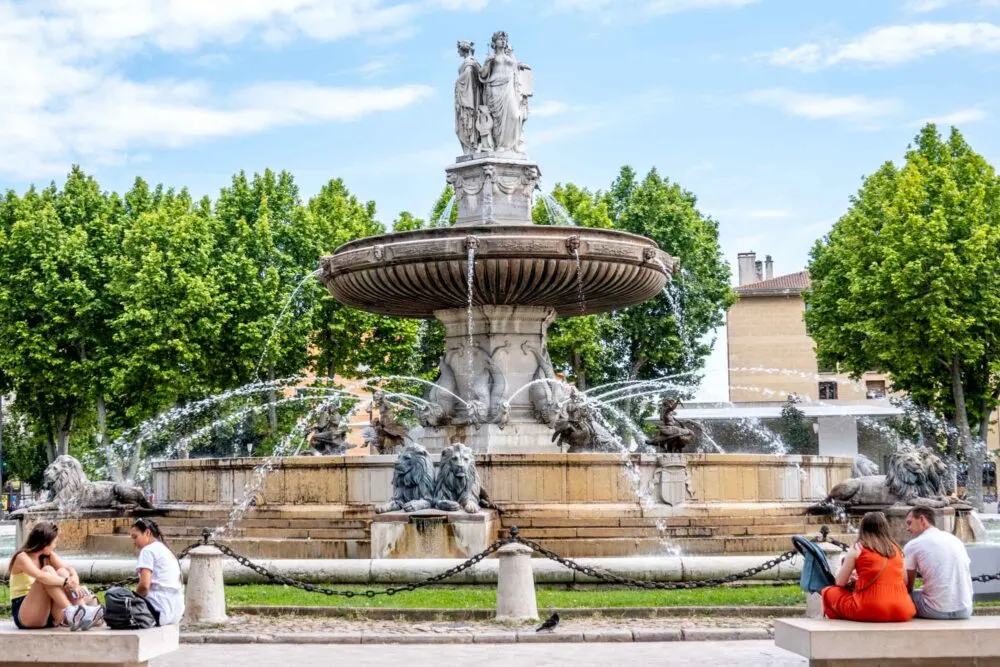
Aix-en-Provence is one of the best cities in the South of France to visit. Often called the City of a Thousand Fountains, Aix is known for its water features, markets, and beautiful pedestrian lanes and squares dotted with plane trees.
A visit to Aix is about being and soaking in the good life. Wander the farmers markets, pull up a chair at one of the cafes, or sample some of the many Provencal specialties at the restaurants and artisan shops.
If you’re looking to visit some of the top attractions in Aix, there are several interesting places to go. The Hotel de Caumont in the city center is an 18th-century mansion featuring period furnishings. It also has a charming garden and café and features rotating exhibits by well-known artists.
Just outside the center, the Atelier Cezanne is another must-visit. The studio of painter and Aix-en-Provence native Paul Cezanne looks now just as it did when the artists died in 1906. His smock, supplies, and some of his favorite subject matter is still displayed here in a space that looks like he just stepped out for lunch.
Arles
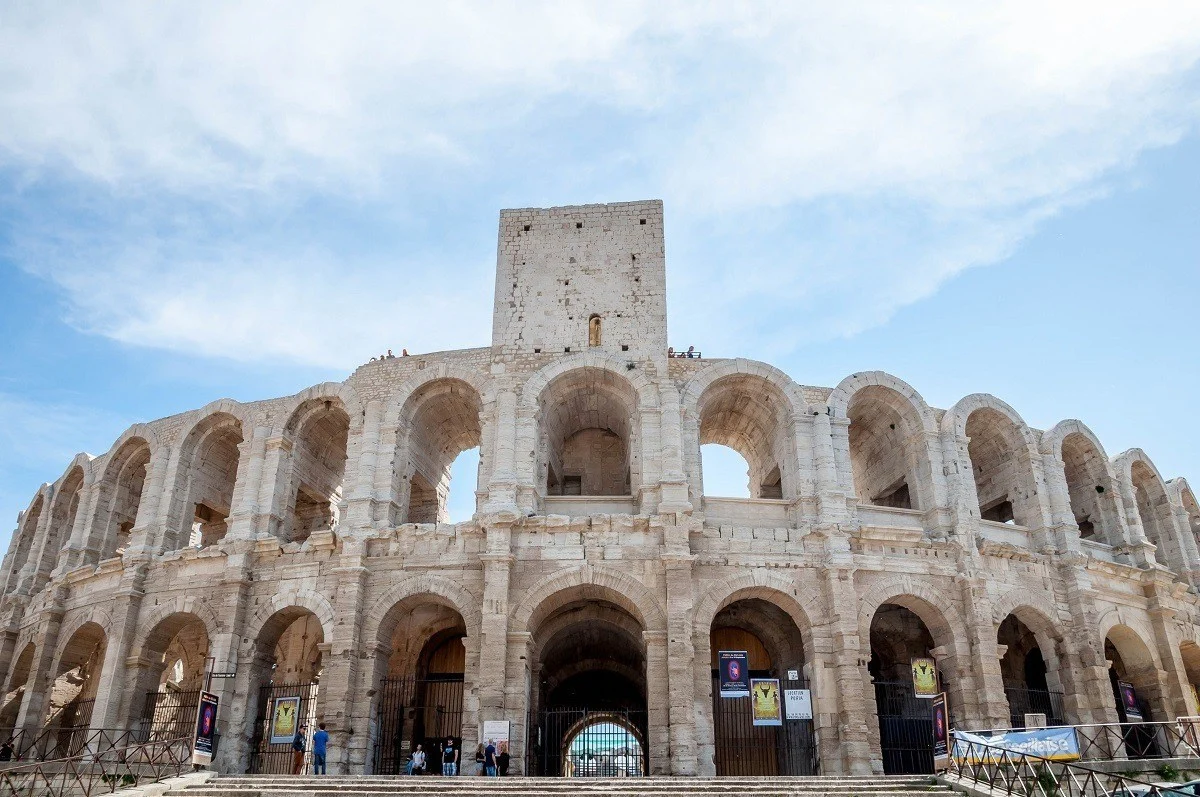
Splashed in blues, yellows, and greens, visiting Arles makes you feel like you’ve stepped into a Van Gogh painting for good reason—you have. The artist produced over 200 pieces when he lived here. Throughout the city, there are replicas of the works in the exact spots where he painted them with plaques that provide some of the backstory.
Arles has a lot to offer even for those who aren’t art lovers. It is packed with history, ambiance, and lots of great food. A visit here is a highlight of any southern France itinerary.
Right in the center of town is Arles Amphitheater, a two-tiered theater that dates from 90 AD and still hosts events. A short walk from the center is Alyscamps, a Roman necropolis that is now an open-air museum lined with sarcophagi and several chapels. Once the main burial site for the city, it is an interesting look back at thousands of years of history. Both places have been recognized as UNESCO World Heritage Sites.
If you visit Arles on a Wednesday or Saturday, the market on the ring road will be impossible to miss. Stroll through to see the Mediterranean and North African cuisines on display and buy provisions for a picnic.
Saint-Remy-de-Provence
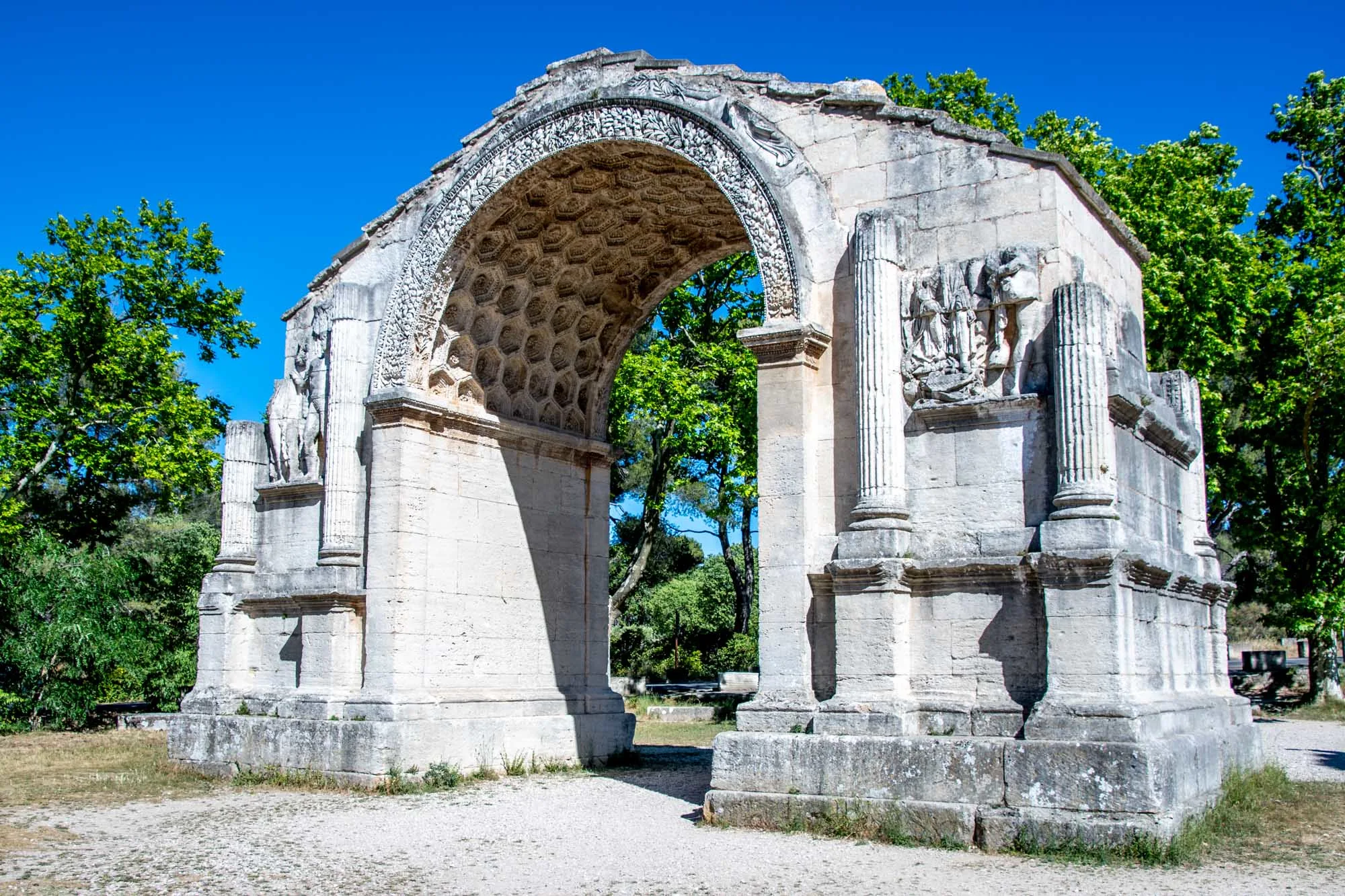
With less than 10,000 residents, Saint-Remy-de-Provence is the type of town where you just want to stay for a while. There are plenty of restaurants, shops, and things to see, and the pace is typically relaxed, which can be welcome in contrast to some of the larger cities in southern France.
Visitors can see most of the town in just a few hours. Or you can linger much long and explore the honeysuckle and wisteria-covered buildings, fountains, and colorful facades.
Located in Chaine des Alpilles, a small mountain range, Saint Remy has been inhabited for centuries. In fact, one of its main attractions is the archaeological site of Glanum. Many of the ruins there are from Romans who took over the area in the 1st century BC. Some of the most notable structures are free to visit right along the road and include a triumphal arch that dates from about 10 BC and a funerary monument of a similar age.
A somewhat more contemporary site is Saint-Paul de Mausole, the psychiatric hospital where Vincent Van Gogh was treated for a about year in 1889 and 1890 shortly before his death. His room is preserved as it was during his stay, and you can explore the grounds and the works he painted there, including Starry Night.
Verdon Gorge
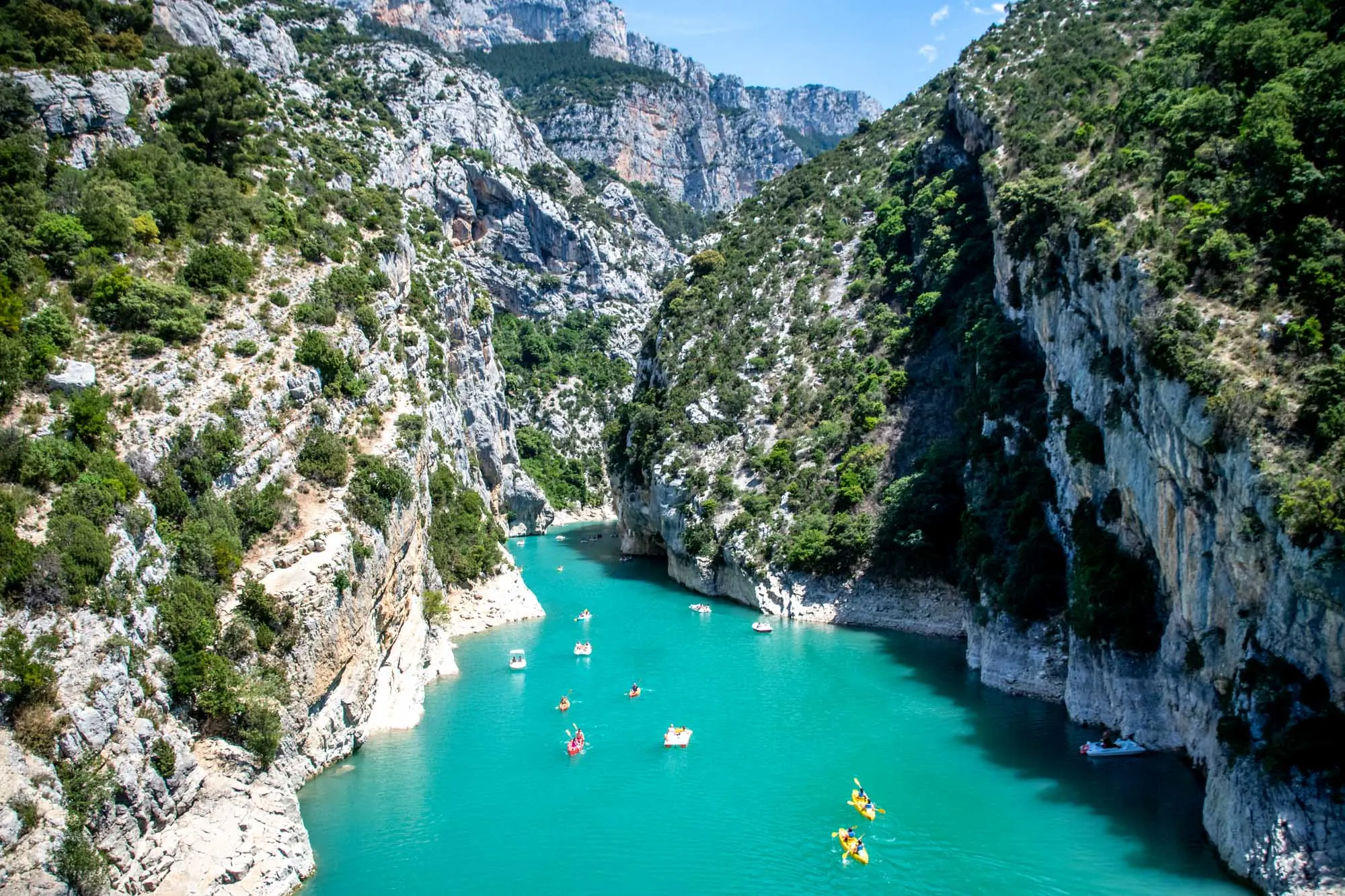
The first thing that catches your attention at the Verdon Gorge is the electric blue water. One of the most stunning natural places to visit in the South of France, this river canyon is 15 miles long and up to .4 miles deep. The limestone cliffs make for incredible scenery.
Paragliding over the canyon and climbing its walls are also popular, but we’re partial to being on the water.
There are three main ways to enjoy the Verdon Gorge river up close—by stand-up paddleboard, kayak, or electric boat. All the watercrafts are available to rent at Base Nautique de l’Etoile at the beginning of the gorge.
Marseille
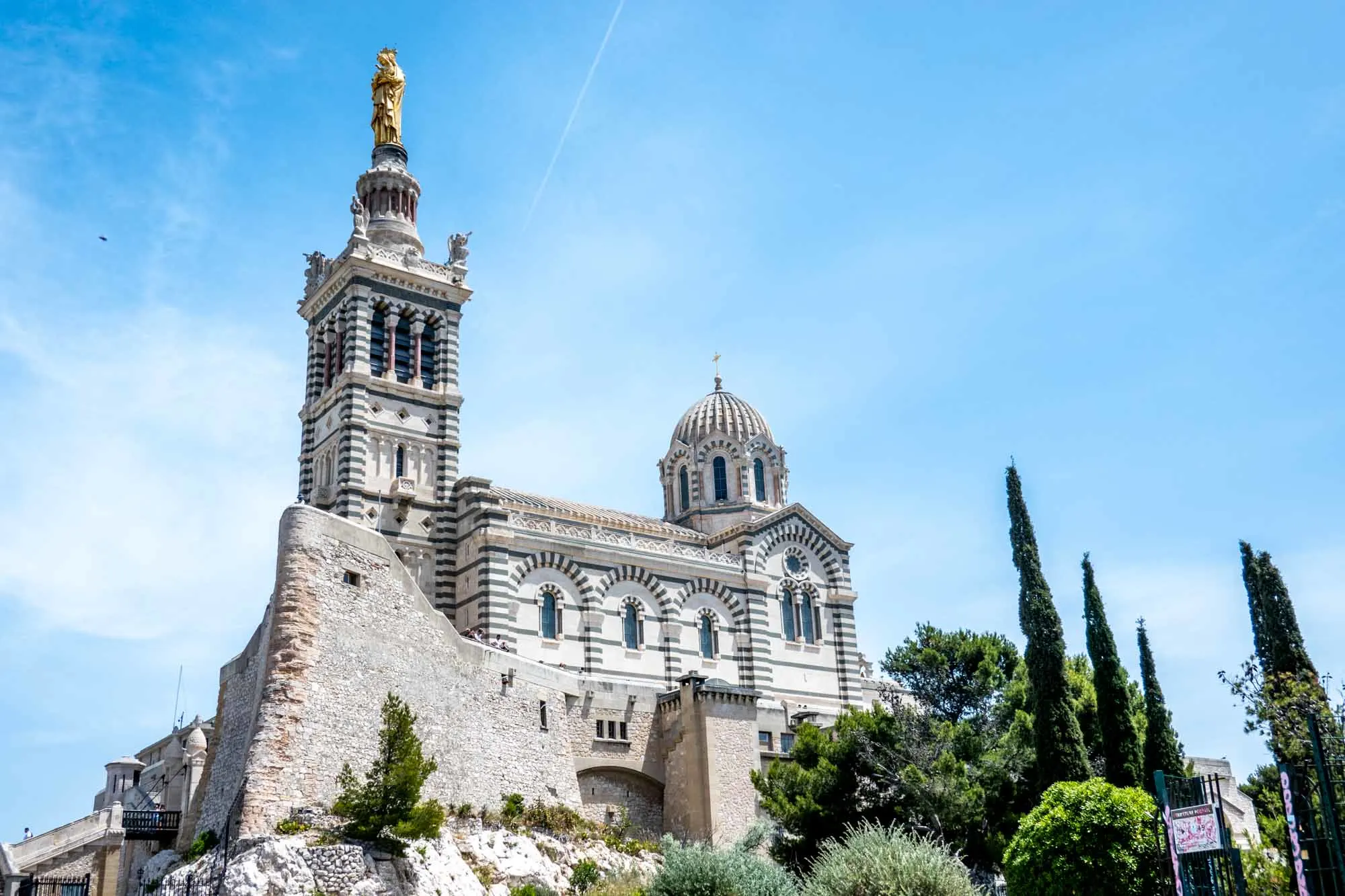
The second largest city in France, Marseille is a sprawling metropolis with a history stretching back to 600 BC.
The cosmopolitan city has been an important trading hub since the Middle Ages and has been influenced by all the cultures coming here to do business from southern Europe to North Africa, Asia, and beyond. The Old Port is still at the heart of the city where visitors and locals stroll along the harbor, watch the boats come in, and catch sightseeing cruises to visit the calanques.
One of the best views of the Old Port is from Notre-Dame de la Garde, a hilltop basilica filled with mosaics and topped with a gilded statue of the Madonna and Child. A visit here is one of the top things to do in Marseille.
Marseille has numerous notable museums and a sprawling park (often compared to New York’s Central Park) built around an 18th-century mansion complete with walking paths, a rose garden, and a lake. For something completely different, visit Cours Julien and Le Panier, the biggest areas for street art in the city.
L’Isle sur la Sorgue
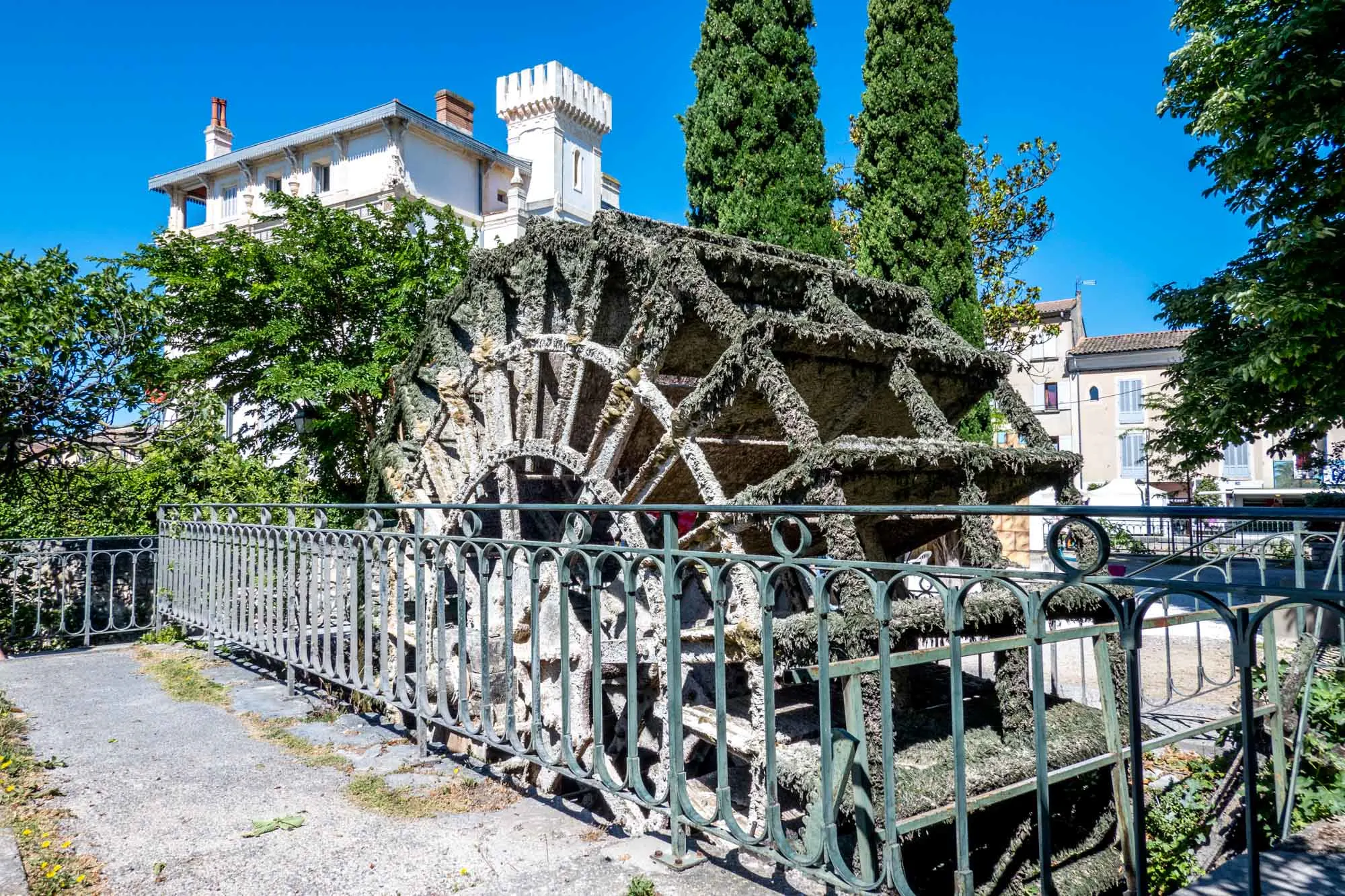
The picturesque town of L’isle sur la Sorgue is situated on the Sorgue River whose canals run beside the ancient streets. Many of the waterwheels that once powered the silk, dyeing, and paper industries are still in place, giving visitors a glimpse into the town’s rich past. Some of them still move, though the show is now just for people’s enjoyment.
In addition to its beautiful setting, people are drawn to L’isle sur la Sorgue for “treasure hunting” and the promise of a bargain. Nearly 300 antique dealers call the town home and specialize in art, furniture, and all manner of unique items. They have an important place in the large weekly market that spills forth all around the center of town.
Visitors will also enjoy the historic mansions that have been converted into art galleries. Don’t miss the Hotel Donadei de Campredon, an 18th-century mansion that is now an art museum featuring modern and contemporary art including sculpture, paintings, and photography.
Rousillon
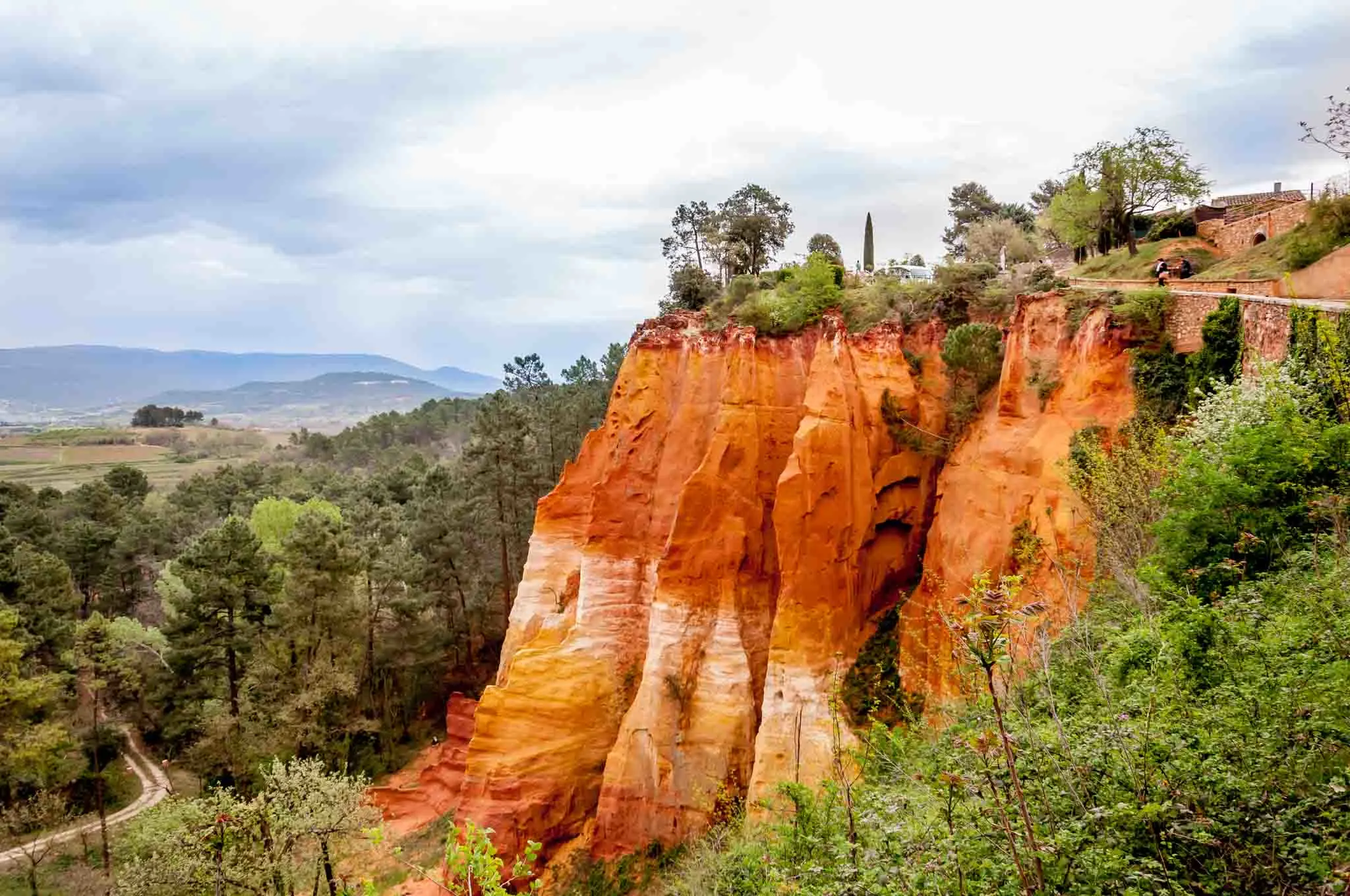
Roussillon has been a protected village since 1943. With less than 1300 residents, it has no modern development – just cafes, winding lanes, and amazing views.
The village is most known for having the largest ochre deposit in the world, which is found on the south end of town. The yellow, red, and orange hills are hard to believe until you actually step foot on the brightly hued paths. If you want to walk through the unusual landscape (a significant landmark in the country), there are 30- or 60-minute routes to choose from, but pick your clothing carefully so you don’t end up with stained pants or shoes.
If you visit Roussillon on Thursday, take the opportunity to visit the small weekly market. It focuses primarily on specialty items such a linens, soaps, wines, and ochre pigments.
Pont du Gard
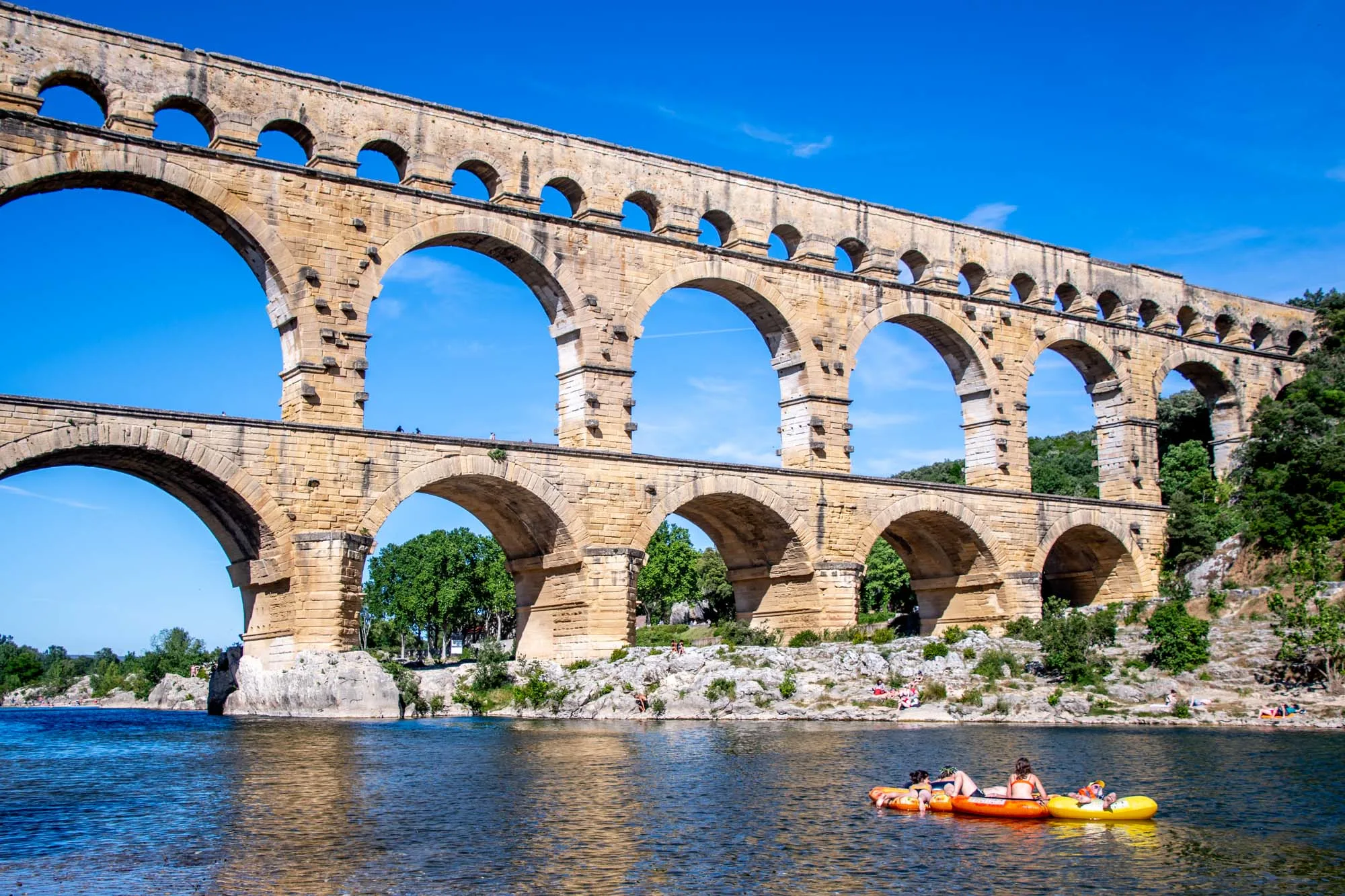
One of the most popular places to see when touring the South of France is the Pont du Gard. It’s difficult to imagine the sheer size of the 2000-year-old aqueduct until you see it up close.
The three tiers of the impressive Roman ruin tower 160 feet above the Gardon River. In the summer, people flock to kayak and swim in the chilly waters that flow around the aqueduct.
Uzes
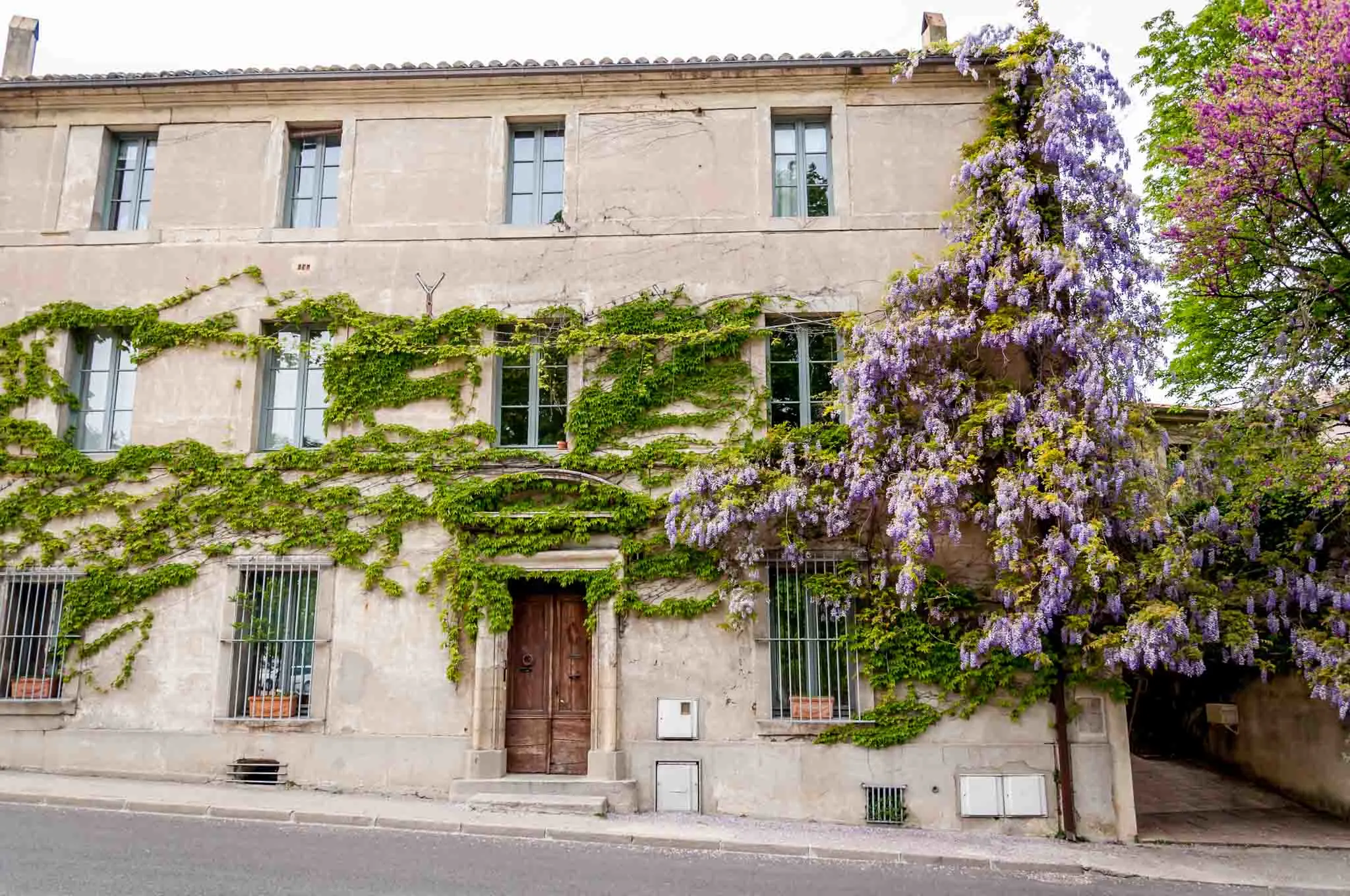
The old town of Uzes is ringed by circular streets. In the Middle Ages, these streets were walls designed to protect the Duke’s Castle at its heart. Visiting the town, you can still see towers, medieval gardens, the castle, and streets that make you feel like you’ve stepped back in history about 800 years.
While the towers and medieval structures are impressive, the real appeal of Uzes comes in wandering through its streets and among its limestone buildings. It’s even better if you find yourself in town on a market day.
On market days—Wednesday and Saturday—much of the town feels taken over by the market sprawling through the streets, though is it centered around the Place aux Herbes. Wednesday is focused on food, including locally grown produce and specialties. The Saturday market adds flowers and household items such as linens, housewares, clothes, and jewelry.
At the same time, regular businesses set up shop outdoors and all the sidewalk cafes fill with people. The atmosphere is welcoming and lively.
Avignon
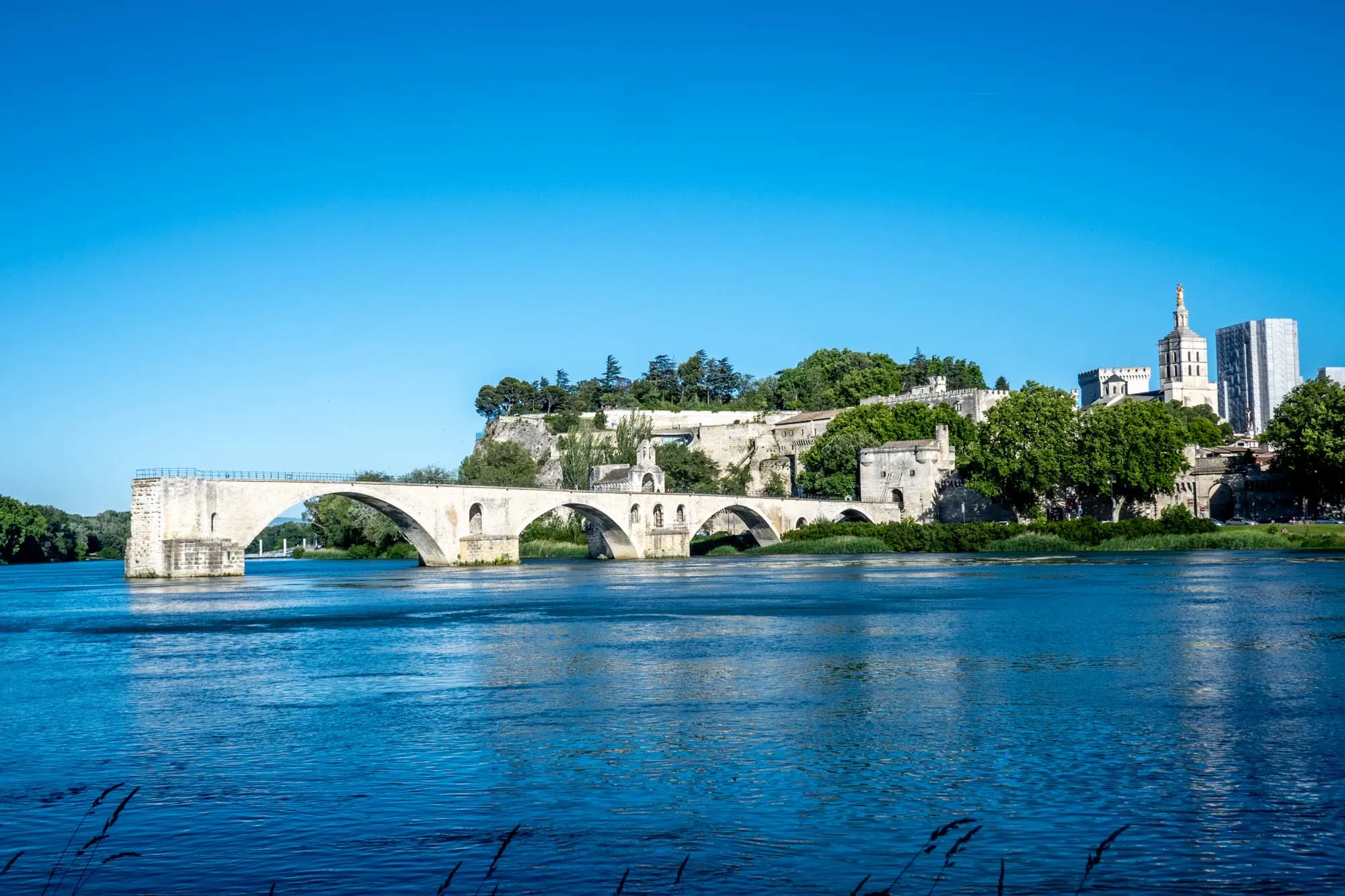
Avignon is a lively city teeming with businesses, cafes, a university, and tons of character. The attractions of its historic core have been recognized as UNESCO World Heritage Sites thanks to their architecture and the unique events that took place here.
At the heart of Avignon is the Palace of the Popes, the largest Gothic palace in Europe. In the 14th century, it was the home of the popes when the papacy moved to Avignon from Rome. Seven legitimate popes and, later, two anti-popes ruled the Catholic Church from France while living here. Though it was was once lavishly decorated, the palace was plundered over the centuries. Nevertheless, it remains one of the top places to see in France.
There are lots of things to do in Avignon beyond the palace as well. Walk along Saint Bénezet bridge (aka Pont d’Avignon), the famous 12th-century bridge to nowhere. Have lunch at one of the restaurants on Place de l’Horloge or stroll through the Parc Rocher des Doms. End your day at Pinotage, a floating wine bar in the Rhone River where you can watch the sunset over the city.
If you’d like to explore beyond the center, head to Manguin Distillery, which has made its famous pear brandy for over 50 years. On Saturday mornings you can join a distillery tour and taste a variety of their products. You might even see bottles attached to the trees outside where the the pears are actually growing inside the bottles.
Nimes
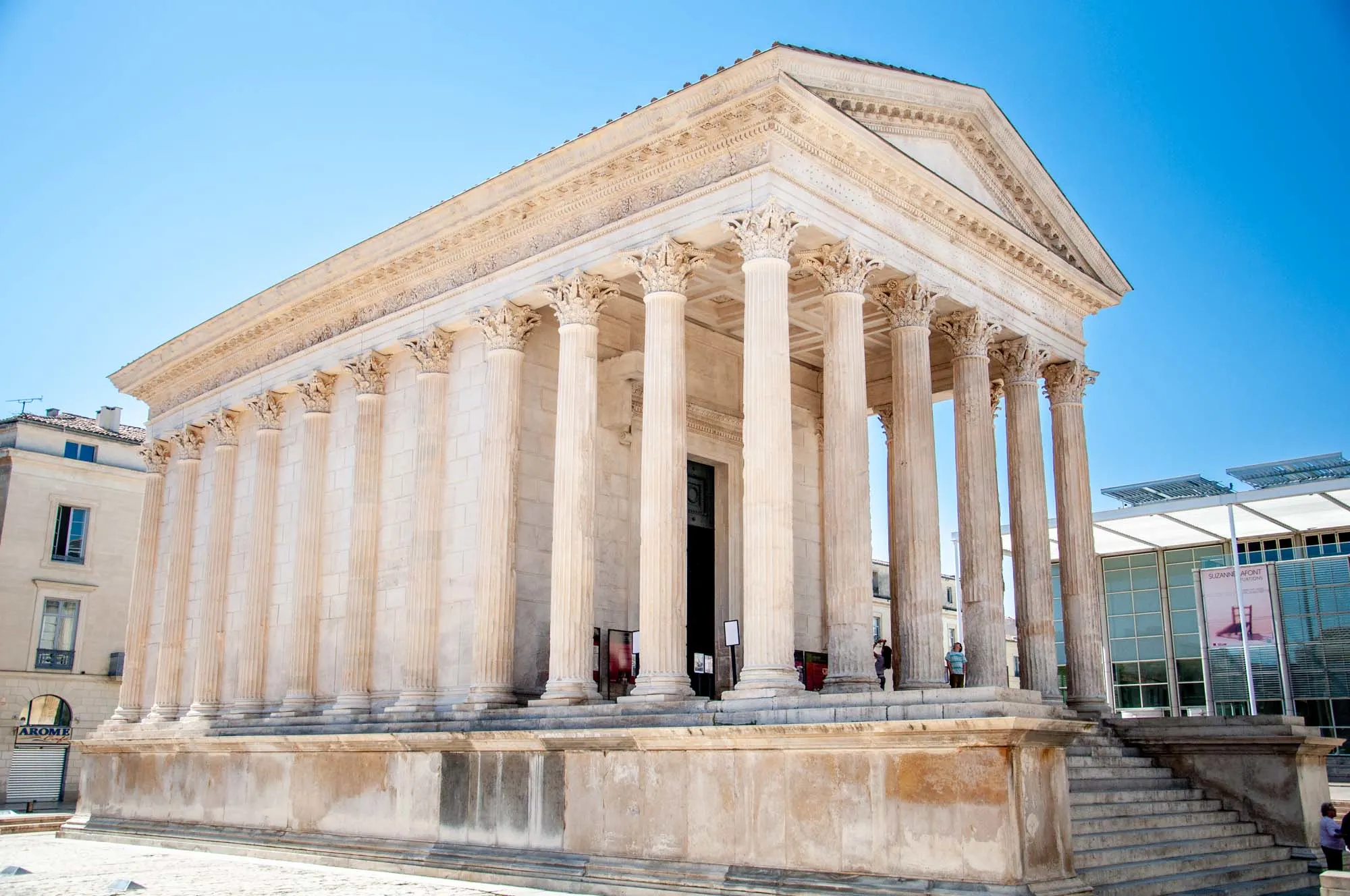
Nimes is a workaday city with a handful of well-preserved Roman ruins.
Its covered food market, Les Halles, bustles with energy as locals buy Provencal specialties such as brandade de morue (pureed salt cod and olive oil) or green olives. As with the other markets, there is also plenty of meat and vegetables on offer plus a handful of restaurants where locals gather sipping wine and catching up on the news.
A short walk from the market is one of the ruins, the Maison Carree. It is one of the best-preserved temples in the Roman Empire, which is amazing when you consider that it is over 2000 years old. Nearby, the Arena of Nimes, which dates from 70AD, is a preserved Roman amphitheater where visitors can still walk the ancient arcades.
Wrap up your trip with a stroll around the gorgeous Les Jardins de la Fontaine, a 18th-century public park with gardens and ponds. If you would rather be indoors, visit the Musée des Beaux-Arts of Nimes. It is a fantastic museum featuring a collection of 3600 impressive works of fine art and sculpture from Roman times to the Old Masters.
Porquerolles
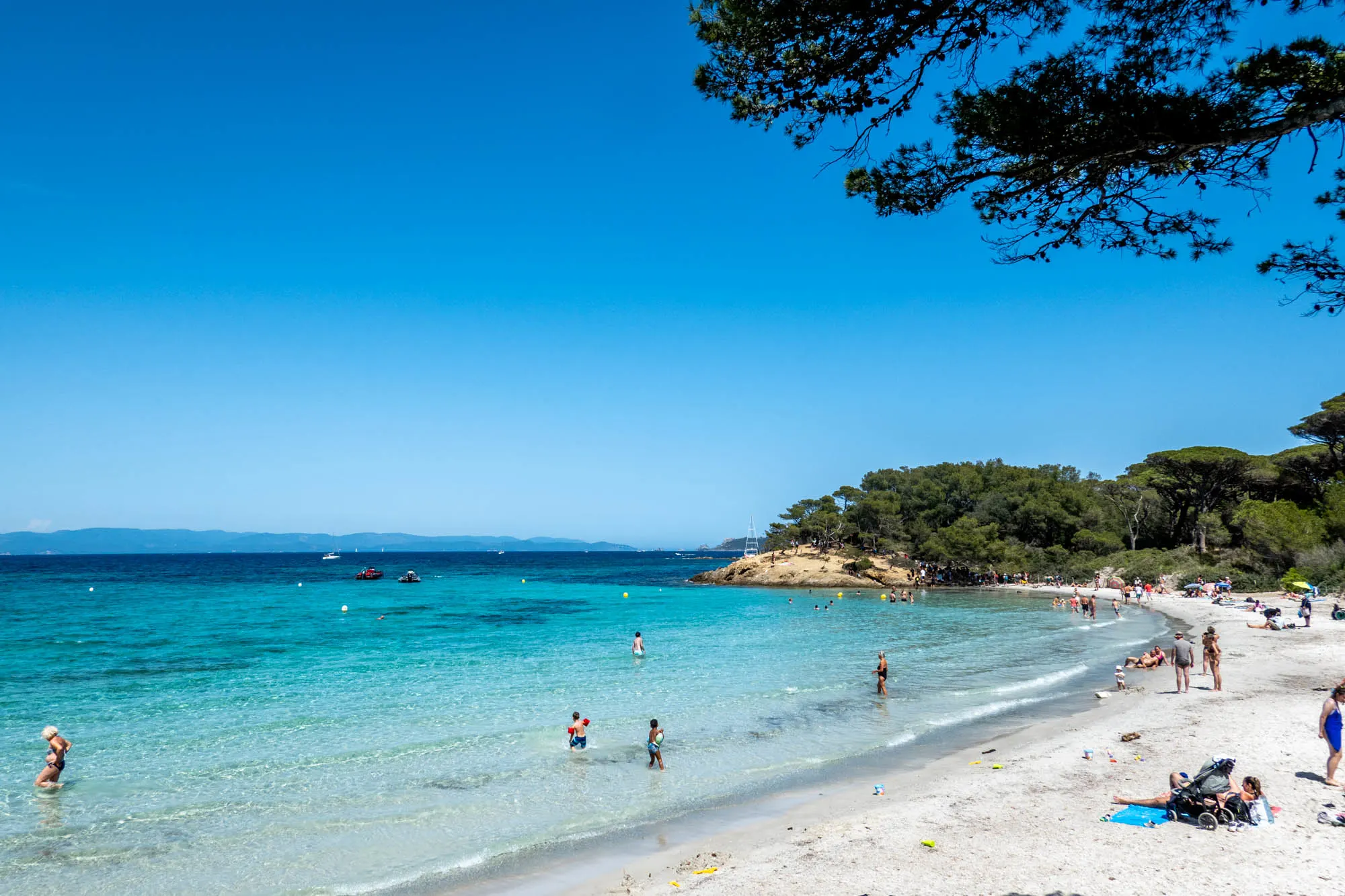
Off the southeastern coast of France, the small island of Porquerolles is a unique getaway. Only about 200 people live on this car-free island where much of the land is part of a national park and nature conservation area.
A 15-minute ferry ride from Hyeres on the French Riviera takes visitors to the port of Porquerolles where you can walk or rent a bike to visit the local beaches, shops, and vineyard. There is also an art gallery and a 14th-century fort with a beautiful viewpoint. We spent a day relaxing on Plage d’Argent and are already plotting a return.
Cassis
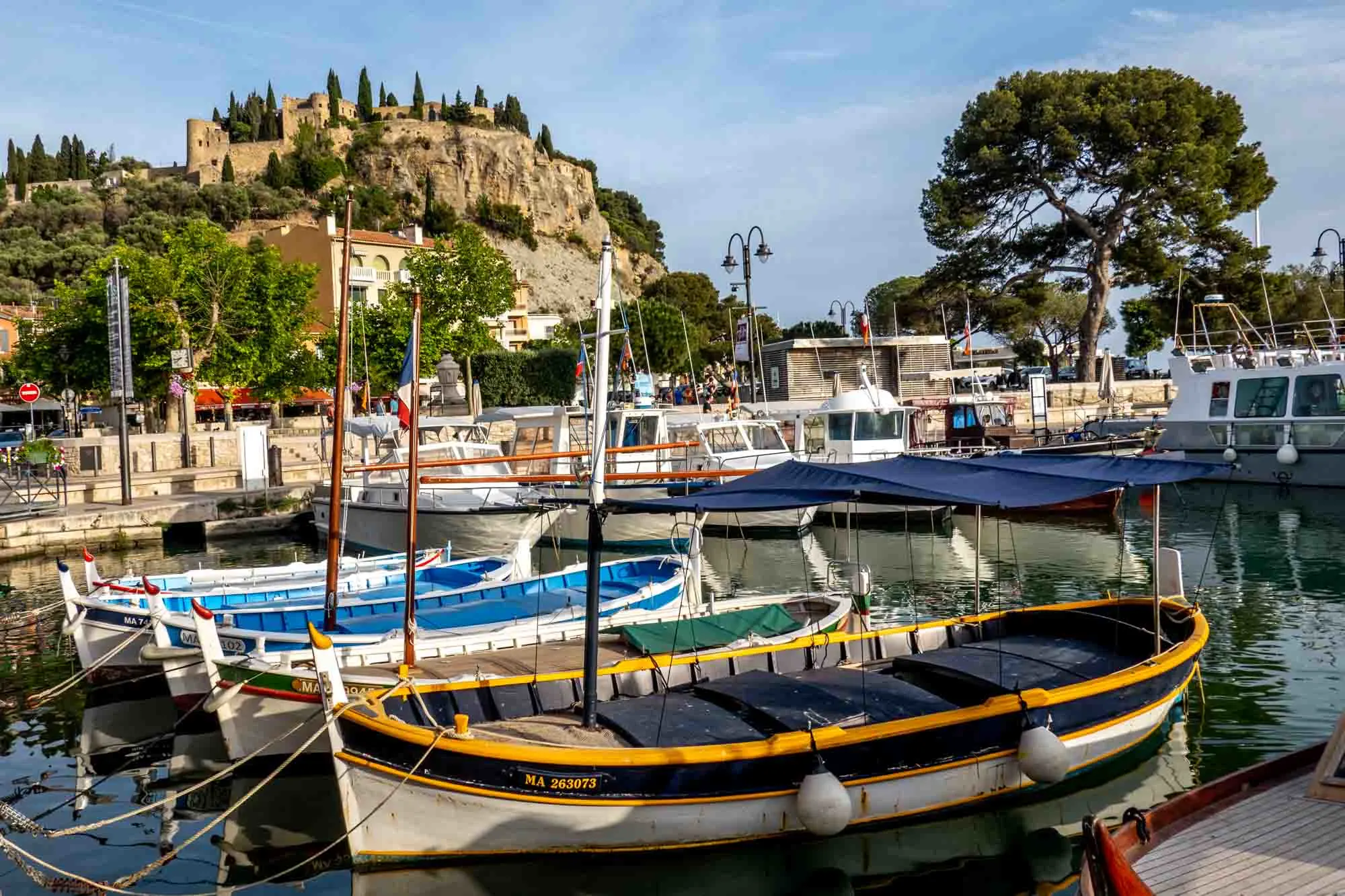
Cassis is a gem of a town. With stunning natural features, harborside restaurants serving great food, and a dramatic mountain drive, we love it so much that we’ve included it in our southern France travel on two trips.
The town is most noted as a jumping off point to visit the calanques— white limestone cliffs that plunge dramatically into the Mediterranean Sea. Some of them have small beaches that can be visited by hiking in. Sea kayaks and boat tours are also popular ways to see them from a little further away.
If you want to stick a little closer to town, walk the marina area to browse the shops or go to the beach that’s just steps from the center. Relax at one of the cafes with some fresh seafood while you marvel at the colors of all the boats. Consider a sunset drive (or take a taxi) on La Route des Cretes, a breathtaking mountain drive that takes you high above the town for one of the most scenic things to do in Provence.
Gordes
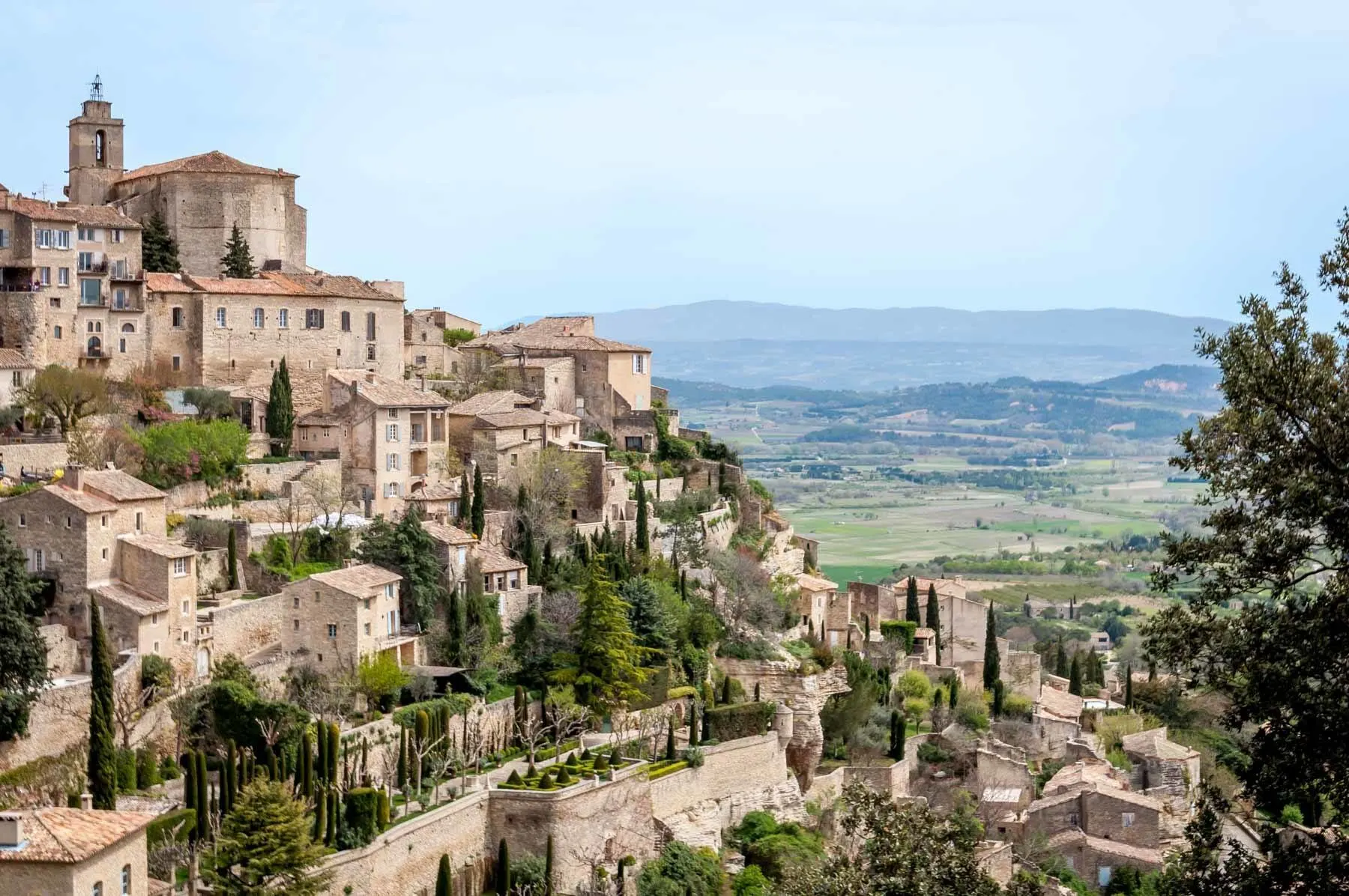
The hilltop village of Gordes is one of the cutest in France. The impression it makes is dramatic from the moment you first see it, seeming to tumble down the hill from its perch high above the valley.
Close up, the stone buildings of Gordes are laced together by narrow cobblestone streets that climb or descend the hill, depending on your perspective. Major sites include Gordes Castle, which originally dates to 1031, and the Cellars of Saint Fermin Palace, a site carved out of rock by Gordes residents in the Middle Ages that includes an olive oil mill, cisterns, and more.
Chateauneuf-du-Pape
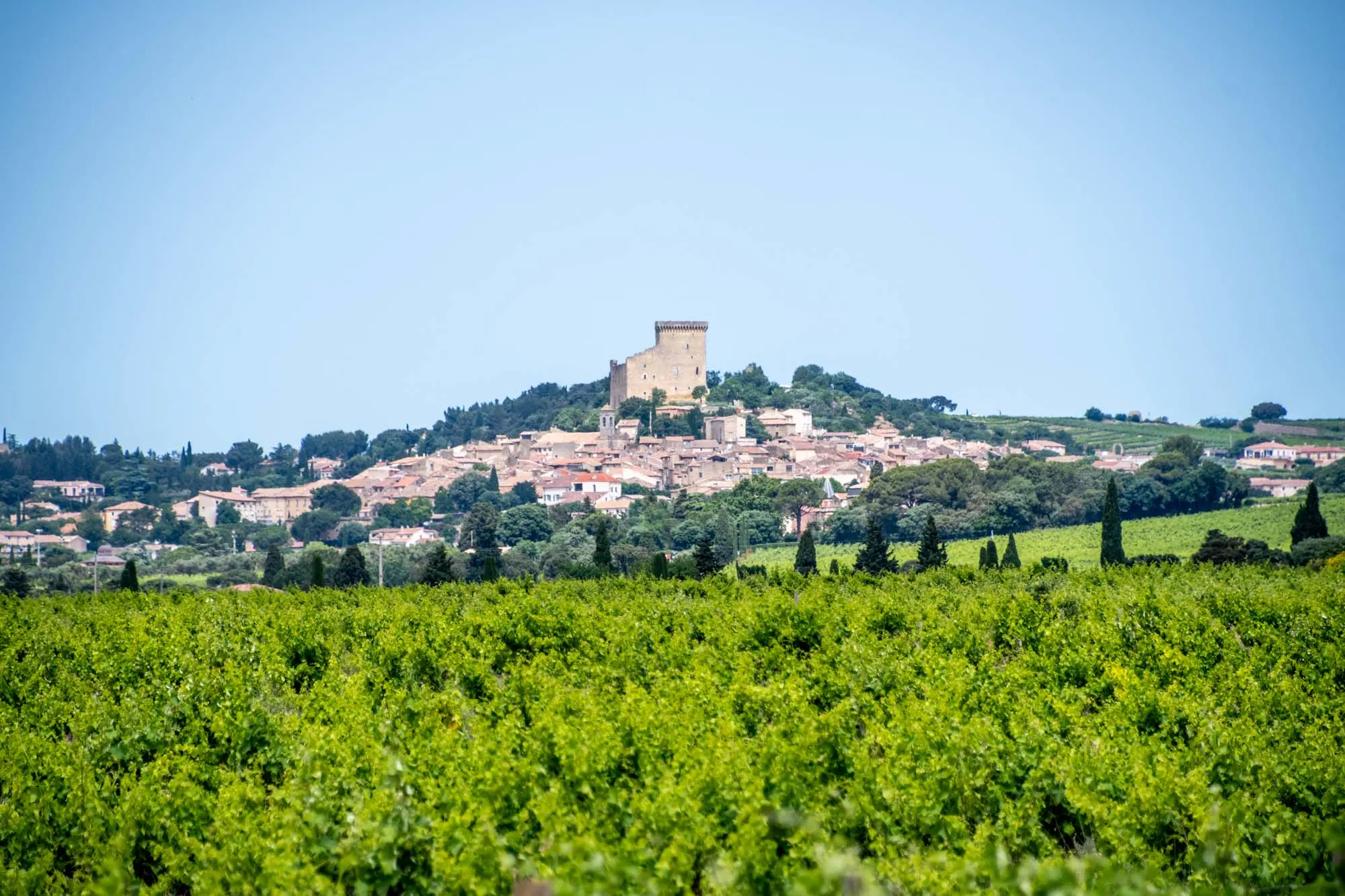
Châteauneuf-du-Pape is all about wine. The tiny town not far from Avignon appears to rise up from a hill surrounded in every direction by vineyards.
At its center is part of the chateau built by Pope John XXII in the 14th century as a refuge from the city’s heat in the summer. During their time here, it was the popes who planted the town’s original grapevines. Over the years, the chateau was partially destroyed, but the part that still stands can be seen from miles around.
The tiny village has a selection of good restaurants and medieval houses in its winding lanes. And, of course, there are lots of wine shops and cellars. Many of them offer tastings of the area’s famous wines. Most are red, but there is also a selection of good whites available.
There are also lots of surrounding wine estates that welcome visitors. Chateau des Fines Roches is one of the newer, more commercial estates, but the wines are good and you’re guaranteed to be able to taste at almost any time.
Ancient Roman Theatre of Orange
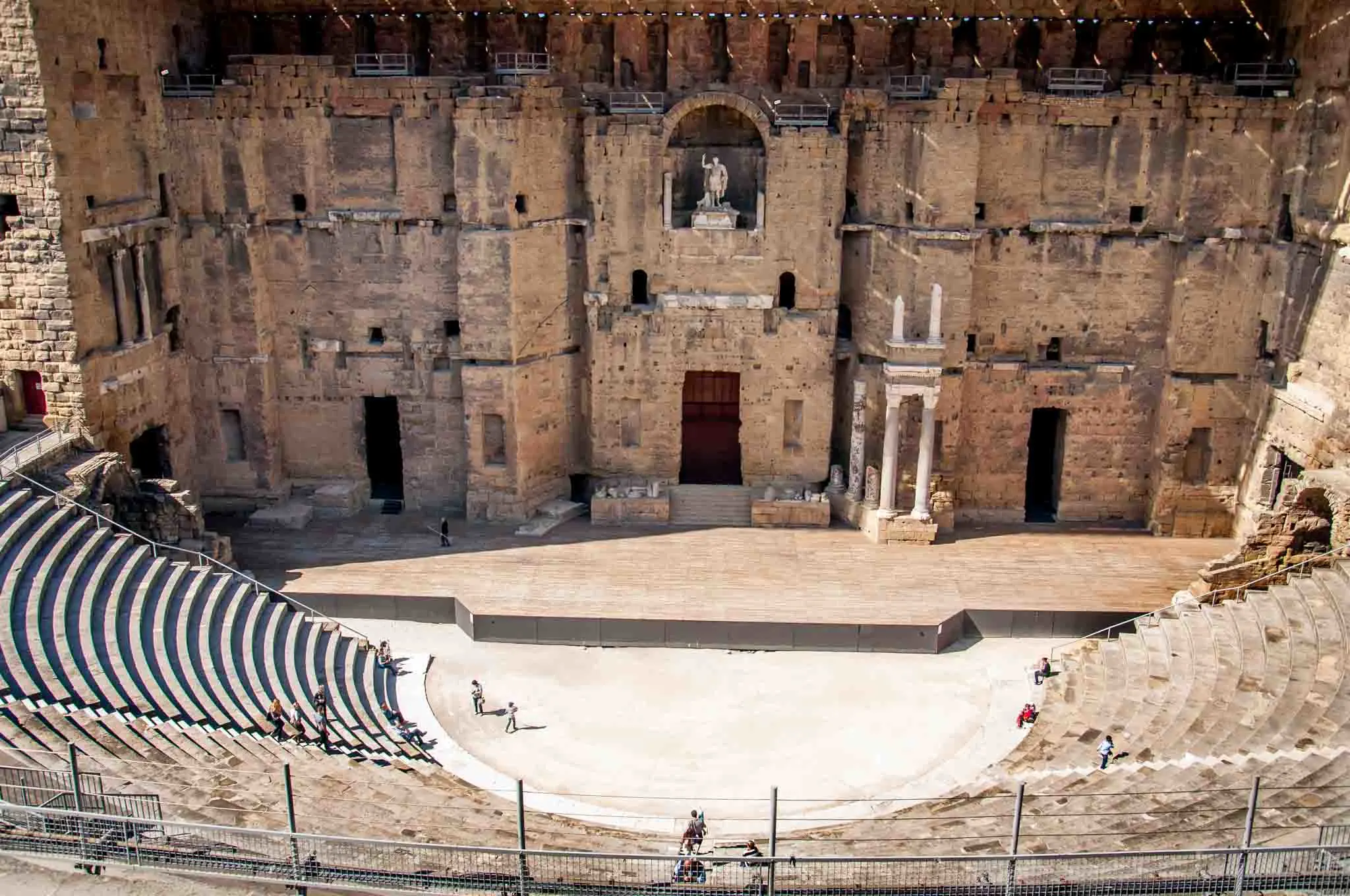
The city of Orange, France, is renowned for its Roman architecture. Its main site, the Ancient Theater of Orange, is astonishingly well preserved for a 2000-year-old structure, and it is still used for special summer performances.
The original statue of the Emperor Augustus still looks down on the crowd from its original niche on the stage. Visitors can climb on the ancient seats and even walk on the historic stage.
Saint-Emilion
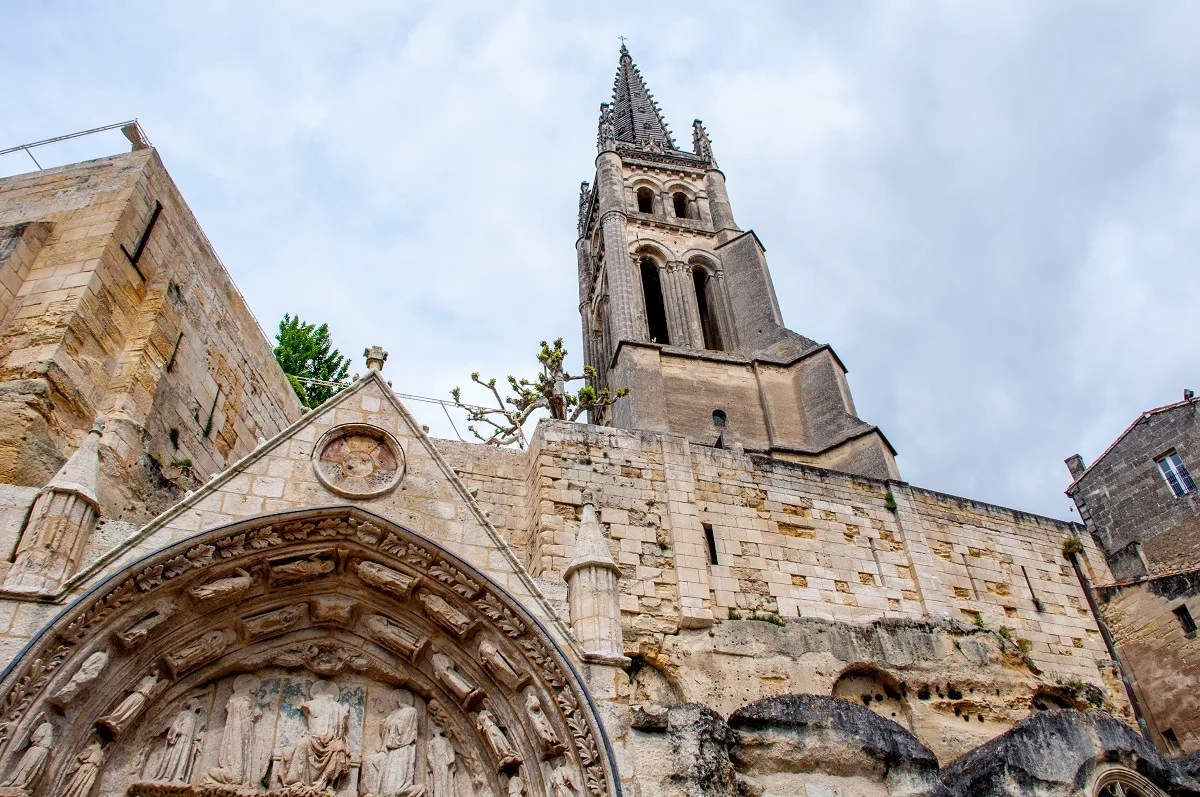
The tiny town of Saint-Emilion has welcomed visitors for centuries to sample the rich red wines the area is known for.
There are nearly 1000 chateaux to choose from in Saint-Emilion, so the decision about where to go can be a hard one. if you’re not able to make plans in advance, the tourism office can suggest a few that are open the day of your visit.
Beyond the vineyards, Saint-Emilion is known for its UNESCO-listed Monolithic Church. The underground church was dug out of limestone in the early 12th century in honor of the hermit monk Emilion who lived in a cave on the site 400 years earlier. The tourism office offers daily tours of the church, the catacombs, and related sites, which is the only way to get an inside look at this part of the village’s history.
Wandering the steep alleys of the village is also a great way to spend an afternoon. Stop at a restaurant, browse the shops, and take in the views. L’Envers du Décor is an excellent option for lunch, and you can stop by the historic Les Cordeliers cloisters to enjoy the grounds and taste their range of Crémant de Bordeaux sparkling wines.
Bordeaux
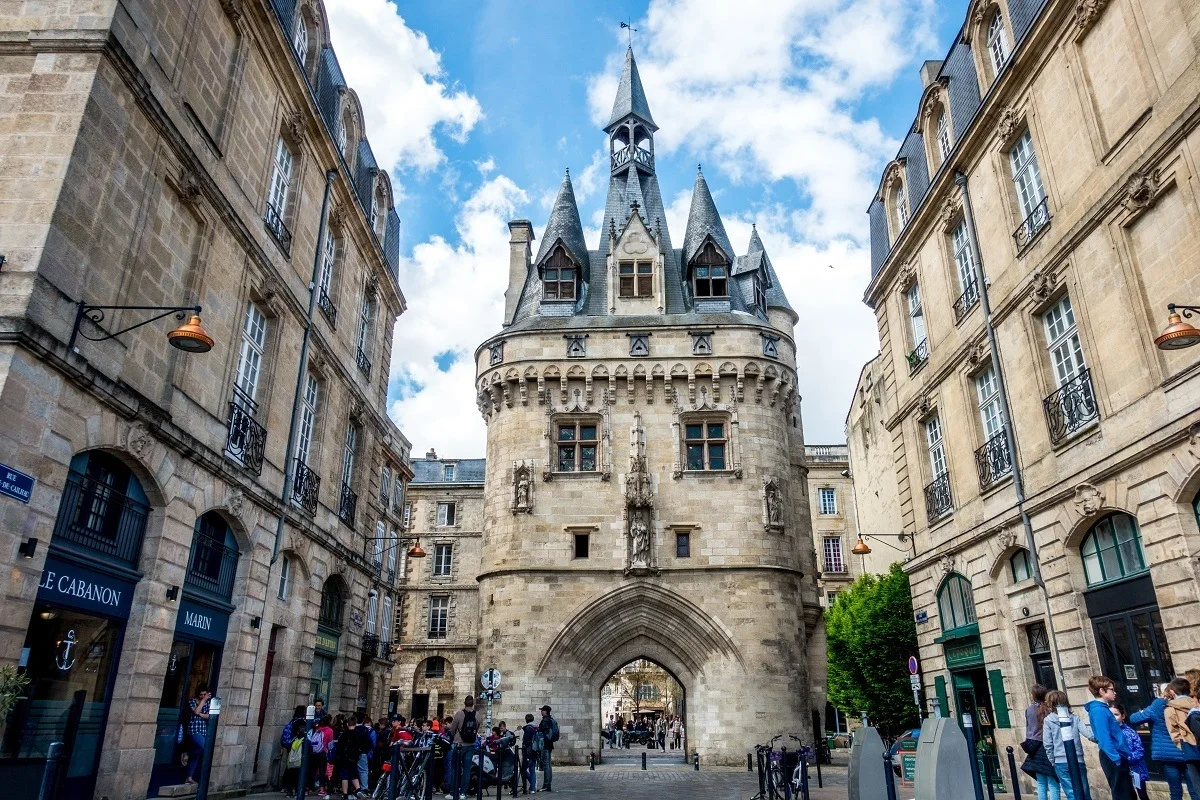
Exquisite architecture, fresh seafood, a vibrant city with an historic core, and some of the best wine in the world—these are the things that make Bordeaux one of the best places to visit in the South of France. Even better, the whole city is highly walkable, with pedestrian-only areas and welcoming squares.
There is an endless selection of things to do in Bordeaux. Visit Mirior d’Eau, a giant pool that creates a unique reflection on its surface. Stroll under the trees at Place des Quinconces, the largest city square in France, and visit one of the regular festivals there. For a break, check out the vendors at Les Halles de Bacalan, a modern food hall with over 20 different merchants.
Don’t miss La Cite du Vin, the amazing, interactive wine museum where you can learn all about wine making and sample lots of varietals from around the world. For a slightly different take on imbibing, visit Moon Harbour Distillery—the first whiskey distillery in Bordeaux. Take a tour or do a tasting at its unique facility, a former German World War II submarine bunker.
Biarritz
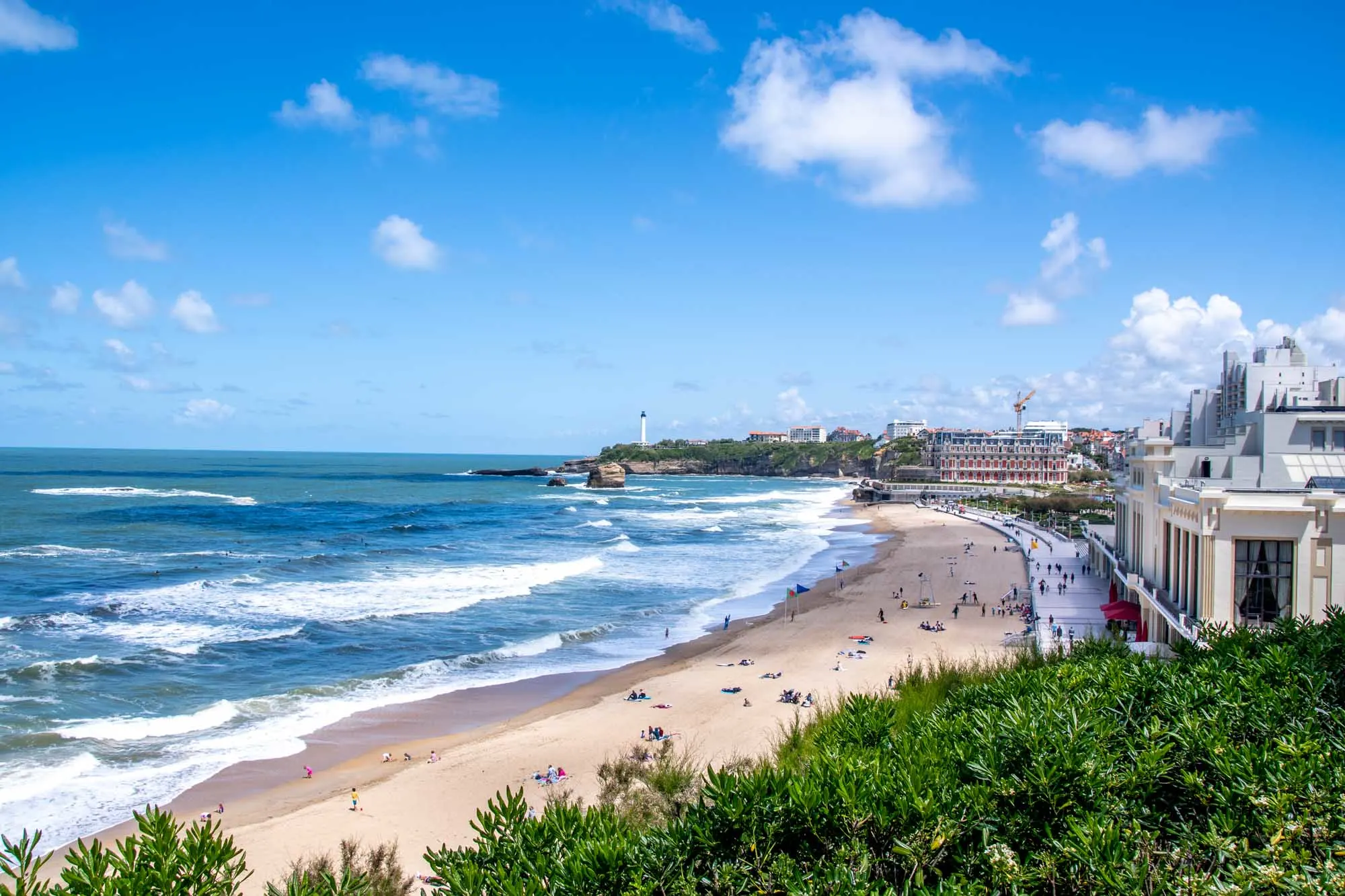
Biarritz is all about the ocean. On the coast of southwestern France and just 20 miles from the border with Spain, this luxurious destination in the Basque Country welcomes visitors to enjoy its sun and sand.
Windy Biarritz is the surfing capital of Europe, drawing people from around the world for casual enjoyment as well as competitions. Even if you’re not surfing yourself, it’s fun to watch the riders do their best tricks among the waves.
The seaside destination also has attractions focusing on the ocean. At the Biarritz Aquarium, visitors can see 50 aquariums filled with thousands of species of sea life, including sharks, seals, rays, and turtles. Just down the coast at City of the Ocean, you can try the surfing simulator, experience the virtual reality shark exhibit, or listen to seafaring explorers explain the mysteries of the ocean.
For something a little calmer, enjoy the Grande Plage, try your luck at the Bellevue casino, or explore the Hotel du Palais—a grand hotel that was originally the imperial residence of Napoleon III and Empress Eugenie.
Saint-Jean-de-Luz
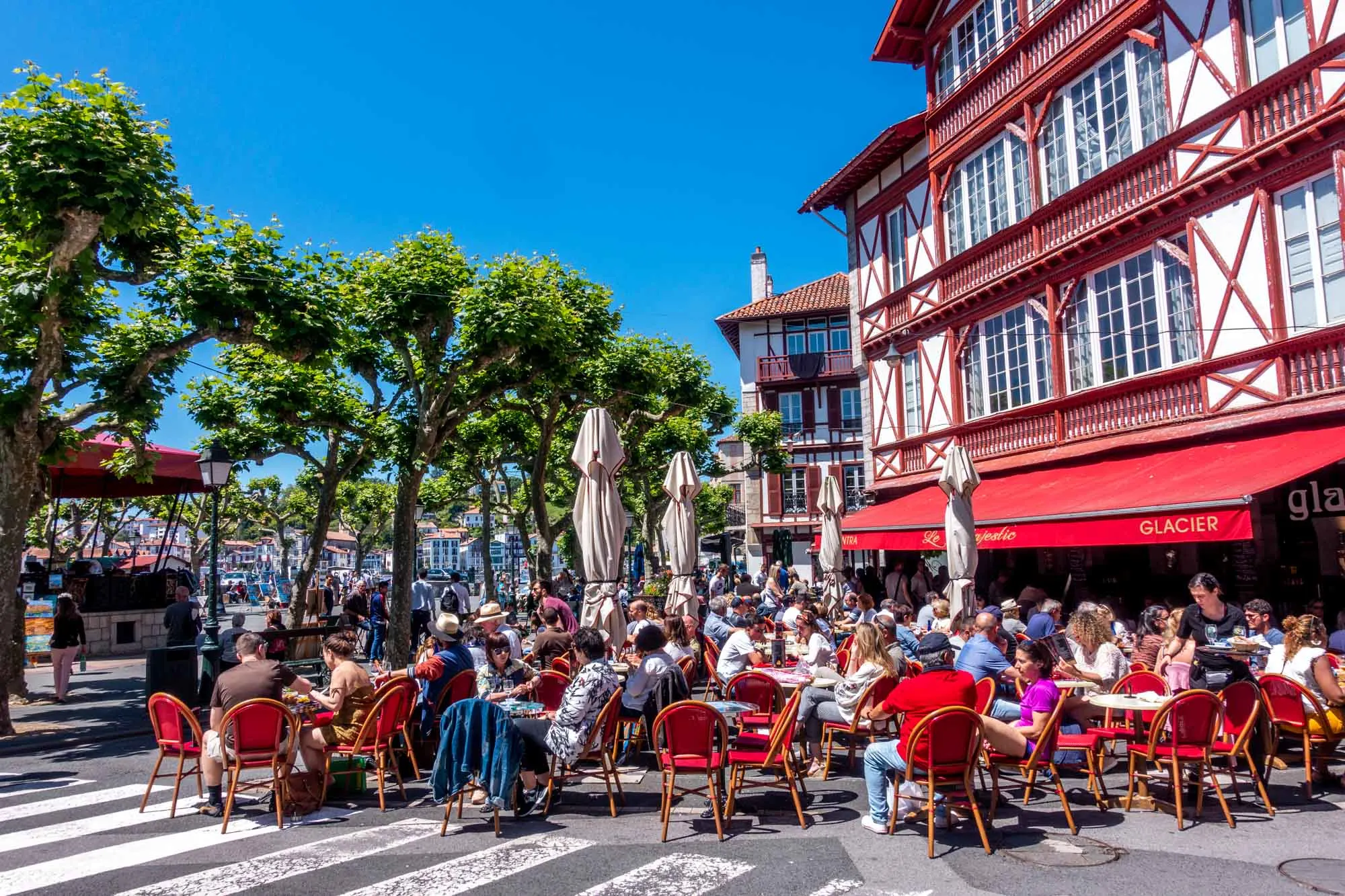
A short drive from Biarritz, the coastal town of Saint-Jean-de-Luz is where to go in the South of France if you’re in search of relaxation. It’s all about enjoying the beach, surfing, and discovering charming town squares.
Like its northern neighbor Biarritz, Saint-Jean-de-Luz has ideal conditions for surfing and sunbathing. Walking along the seawall provides a great vantage point for seeing all the activity.
When you’re ready for a break from the ocean, check out the town squares. One of the most inviting is Place Louis XIV, which has lots of bars and restaurants plus occasional live music and painters who capture the scene en plein air (outside), which is fascinating to watch.
A few steps from the square, you can visit Maison Louis XIV, a 17th-century home where the Sun King stayed while anticipating his marriage to the Infanta of Spain, Maria Theresa. They married in 1660 at the church of St-Jean-Baptiste nearby, which is also open for visiting.
Laura Longwell is an award-winning travel blogger and photographer. Since founding Travel Addicts in 2008, she has written hundreds of articles that help over 3 million people a year get the most out of their travel. In that time, she has visited nearly 60 countries on 5 continents, often returning to favorite destinations over and over again. She has a deep love of history, uncovering unexpected attractions, and trying all the good food a place has to offer.
In addition to Travel Addicts, Laura runs a site about her hometown of Philadelphia—Guide to Philly—which chronicles unique things to do and places to see around southeastern Pennsylvania. Her travel tips and advice appear across the web.
